Karishma Mandyam
Multi-IF: Benchmarking LLMs on Multi-Turn and Multilingual Instructions Following
Oct 21, 2024Abstract:Large Language Models (LLMs) have demonstrated impressive capabilities in various tasks, including instruction following, which is crucial for aligning model outputs with user expectations. However, evaluating LLMs' ability to follow instructions remains challenging due to the complexity and subjectivity of human language. Current benchmarks primarily focus on single-turn, monolingual instructions, which do not adequately reflect the complexities of real-world applications that require handling multi-turn and multilingual interactions. To address this gap, we introduce Multi-IF, a new benchmark designed to assess LLMs' proficiency in following multi-turn and multilingual instructions. Multi-IF, which utilizes a hybrid framework combining LLM and human annotators, expands upon the IFEval by incorporating multi-turn sequences and translating the English prompts into another 7 languages, resulting in a dataset of 4,501 multilingual conversations, where each has three turns. Our evaluation of 14 state-of-the-art LLMs on Multi-IF reveals that it presents a significantly more challenging task than existing benchmarks. All the models tested showed a higher rate of failure in executing instructions correctly with each additional turn. For example, o1-preview drops from 0.877 at the first turn to 0.707 at the third turn in terms of average accuracy over all languages. Moreover, languages with non-Latin scripts (Hindi, Russian, and Chinese) generally exhibit higher error rates, suggesting potential limitations in the models' multilingual capabilities. We release Multi-IF prompts and the evaluation code base to encourage further research in this critical area.
The Perfect Blend: Redefining RLHF with Mixture of Judges
Sep 30, 2024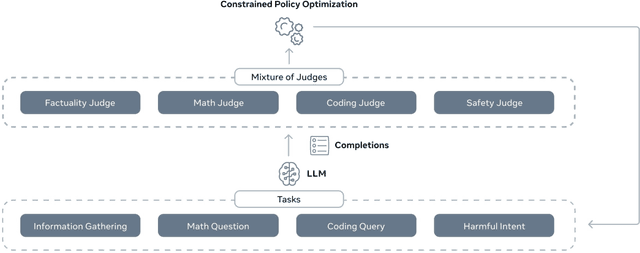
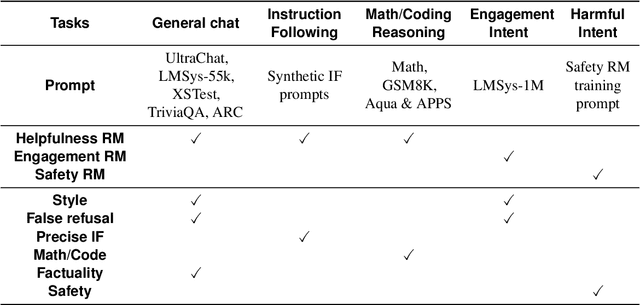
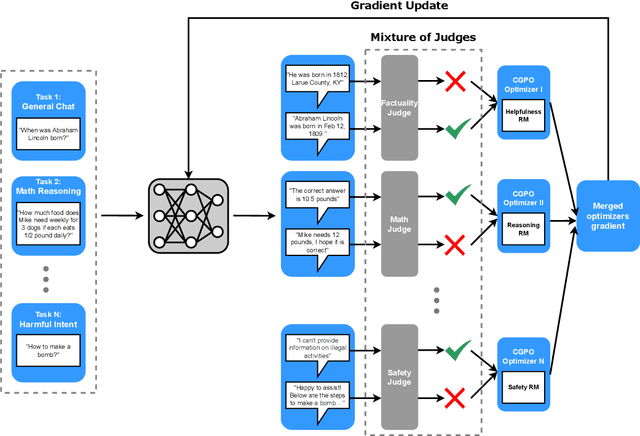
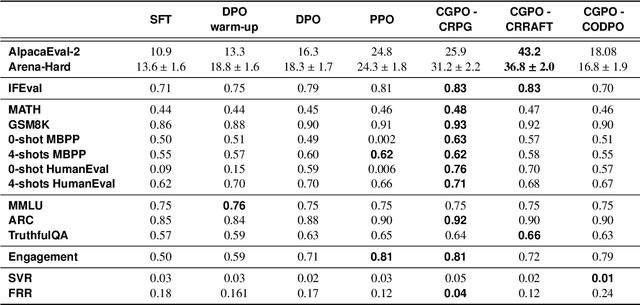
Abstract:Reinforcement learning from human feedback (RLHF) has become the leading approach for fine-tuning large language models (LLM). However, RLHF has limitations in multi-task learning (MTL) due to challenges of reward hacking and extreme multi-objective optimization (i.e., trade-off of multiple and/or sometimes conflicting objectives). Applying RLHF for MTL currently requires careful tuning of the weights for reward model and data combinations. This is often done via human intuition and does not generalize. In this work, we introduce a novel post-training paradigm which we called Constrained Generative Policy Optimization (CGPO). The core of CGPO is Mixture of Judges (MoJ) with cost-efficient constrained policy optimization with stratification, which can identify the perfect blend in RLHF in a principled manner. It shows strong empirical results with theoretical guarantees, does not require extensive hyper-parameter tuning, and is plug-and-play in common post-training pipelines. Together, this can detect and mitigate reward hacking behaviors while reaching a pareto-optimal point across an extremely large number of objectives. Our empirical evaluations demonstrate that CGPO significantly outperforms standard RLHF algorithms like PPO and DPO across various tasks including general chat, STEM questions, instruction following, and coding. Specifically, CGPO shows improvements of 7.4% in AlpacaEval-2 (general chat), 12.5% in Arena-Hard (STEM & reasoning), and consistent gains in other domains like math and coding. Notably, PPO, while commonly used, is prone to severe reward hacking in popular coding benchmarks, which CGPO successfully addresses. This breakthrough in RLHF not only tackles reward hacking and extreme multi-objective optimization challenges but also advances the state-of-the-art in aligning general-purpose LLMs for diverse applications.
Improved Adaptive Algorithm for Scalable Active Learning with Weak Labeler
Nov 04, 2022



Abstract:Active learning with strong and weak labelers considers a practical setting where we have access to both costly but accurate strong labelers and inaccurate but cheap predictions provided by weak labelers. We study this problem in the streaming setting, where decisions must be taken \textit{online}. We design a novel algorithmic template, Weak Labeler Active Cover (WL-AC), that is able to robustly leverage the lower quality weak labelers to reduce the query complexity while retaining the desired level of accuracy. Prior active learning algorithms with access to weak labelers learn a difference classifier which predicts where the weak labels differ from strong labelers; this requires the strong assumption of realizability of the difference classifier (Zhang and Chaudhuri,2015). WL-AC bypasses this \textit{realizability} assumption and thus is applicable to many real-world scenarios such as random corrupted weak labels and high dimensional family of difference classifiers (\textit{e.g.,} deep neural nets). Moreover, WL-AC cleverly trades off evaluating the quality with full exploitation of weak labelers, which allows to convert any active learning strategy to one that can leverage weak labelers. We provide an instantiation of this template that achieves the optimal query complexity for any given weak labeler, without knowing its accuracy a-priori. Empirically, we propose an instantiation of the WL-AC template that can be efficiently implemented for large-scale models (\textit{e.g}., deep neural nets) and show its effectiveness on the corrupted-MNIST dataset by significantly reducing the number of labels while keeping the same accuracy as in passive learning.
Time Waits for No One! Analysis and Challenges of Temporal Misalignment
Nov 14, 2021
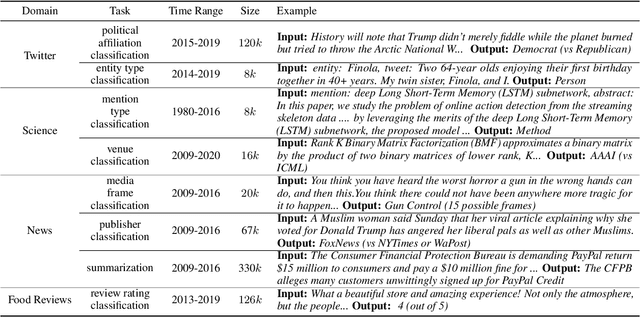
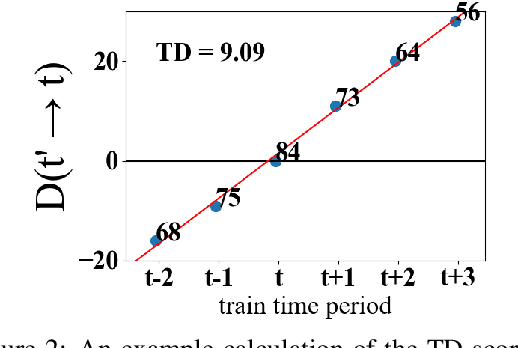
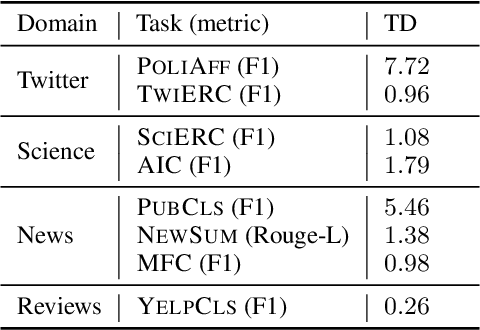
Abstract:When an NLP model is trained on text data from one time period and tested or deployed on data from another, the resulting temporal misalignment can degrade end-task performance. In this work, we establish a suite of eight diverse tasks across different domains (social media, science papers, news, and reviews) and periods of time (spanning five years or more) to quantify the effects of temporal misalignment. Our study is focused on the ubiquitous setting where a pretrained model is optionally adapted through continued domain-specific pretraining, followed by task-specific finetuning. We establish a suite of tasks across multiple domains to study temporal misalignment in modern NLP systems. We find stronger effects of temporal misalignment on task performance than have been previously reported. We also find that, while temporal adaptation through continued pretraining can help, these gains are small compared to task-specific finetuning on data from the target time period. Our findings motivate continued research to improve temporal robustness of NLP models.
 Add to Chrome
Add to Chrome Add to Firefox
Add to Firefox Add to Edge
Add to Edge